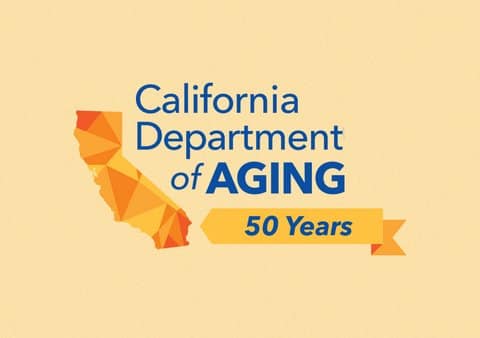
03 Feb Keeping Tabs on California’s Master Plan for Aging

The California Department of Aging administers programs that serve older adults, adults with disabilities, family caregivers, and residents in long-term care facilities throughout California. (California Department of Aging via Bay City News)
By Susan Nash
Bay City News
California’s Master Plan for Aging has been lauded as the broadest and most ambitious such plan in the nation. Launched by Gov. Gavin Newson in January 2021, the plan outlines five major goals and a 10-year blueprint for dealing with a population where one in four Californians will be age 60 or over by 2030.
Since the plan’s inception, the state has launched or planned 227 initiatives to help older adults in areas ranging from health care to housing to digital access.
Three years in, watchdog and oversight groups are taking a look at progress so far. In a report issued earlier this month, the state’s Little Hoover Commission — an independent, bipartisan board formed in 1962 to advise the governor and Legislature — reported that implementation of the Master Plan has been challenging because of the number of people and agencies tasked with putting it into action.
Those involved include the California Health and Human Services Agency, the California Department of Aging, a Work Group for Aging made up of representatives of Newsom’s cabinet and other executive departments, the governor’s office senior advisor, the California Commission on Aging and several stakeholder groups.
According to the LHC report, “In practice, it is not clear which agency, if any, has ultimate responsibility to ensuring progress” on the hundreds of projects and programs underway.
LHC chairman Pedro Nava said in an interview that while he is “encouraged by the fact that this [gubernatorial] administration began to give serious consideration to the growing needs of” older adults, there is a need to “develop and maintain a permanent constituency that will advocate for” and oversee the plan’s ambitious agenda.
To that end, the LHC recommends that the state Legislature “establish a joint committee to oversee implementation of the plan through 2030.”
In another 2023 report on the Master Plan, the IMPACT (Implementing the Master Plan for Aging in California Together) Stakeholder Committee recommended that the coming years be “be clearly focused” on three specific goals: 1. Build a home care system that works for all Californians; 2. End older adult homelessness in California; and 3. Use the MPA to advance equity in aging.
The LHC agreed with the IMPACT committee recommendations and more generally with the idea that the plan must “deliver results … to residents … with an urgency not typical of most government operations.”
Without this sense of urgency, Nava noted, lawmakers tend “not to focus on an issue until it’s a catastrophe.”
The radical demographic change anticipated by the Master Plan is indeed already underway and will dramatically alter what California’s population looks like in the coming decades. By 2060, the number of children 17 and under is expected to decrease by 5%, while those over 55 will increase by 10%. The state’s median age will be over 45, compared to age 28 in 1970.
The older population will also become more diverse, with the population of Hispanics age 65+ expected to grow by 18% while the older white population decreases by 17%.
The Department of Aging is also monitoring the Master Plan’s progress. In its 2023 Annual Report, the DOA found “significant advancements” in many areas, including expanding access to health care coverage and Medi-Cal; construction and rehabilitation of low-income housing for older adults; addressing older adults’ behavioral health; and expanding the CalFresh food assistance program to older adults and people with disabilities.
DOA director Susan DeMarois said that ongoing stakeholder engagement means “continuing momentum that is propelling the Master Plan forward.” As a concrete example of a Master Plan accomplishment, DeMarois singled out the CalGrows and In-Home Supportive Services Career Pathways Program, which provide for recruitment, training and maintenance of home caregivers.
“People want to stay in their homes as they age,” DeMarois said. “These programs make it possible for them to do so.”
To date, approximately $9.5 billion has been spent on implementing various Master Plan projects and initiatives. While information on these expenditures has been compiled into a publicly available format — “we track everything,” DeMarois explains — the LHC report recommends that there be “a systemic way to calculate Master Plan spending so the administration and lawmakers may more easily and thoroughly assess investments and plan funding for future initiatives.”
Those involved all agree that the Master Plan for Aging is meant to help Californians of all ages, not just older adults.
The DOA’s Annual Report reiterates that “Aging Impacts us all … whether a child being raised by a grandparent, a 20-year-old choosing a career path, a 30-year-old living with Down syndrome, a 40-year-old daughter caring for a parent with Alzheimer’s, a 50-year-old facing retirement without savings, a 60-year-old experiencing memory loss, a 70-year-old struggling to make ends meet, an 80-year-old living at home with the support of a caregiver, or the large number of Californians in their 90s who are approaching the once-elusive centenarian status.”
>>>Read: Pandemic Hitting Older People Hardest, But Everyone Still at Risk
“The Master Plan is not age-specific, that’s for sure,” said DeMarois. “Employers need to understand that care for older people is as important as childcare and that their own workforces will be changing; transportation planners need to consider the shift in demographics; and young people in college should think about how an aging population will affect” their career options.
The LHC’s Nava puts California’s changing population and the Master Plan goals into a larger context.
“Young people need to appreciate that life is a continuing journey. As society moves forward, we live longer, so conservation, protection of the environment and quality of life [as we age] is something to consider in your 20s and 30s,” he said.
Copyright © 2024 Bay City News, Inc. All rights reserved. Republication, rebroadcast or redistribution without the express written consent of Bay City News, Inc. is prohibited. Bay City News is a 24/7 news service covering the greater Bay Area.






No Comments